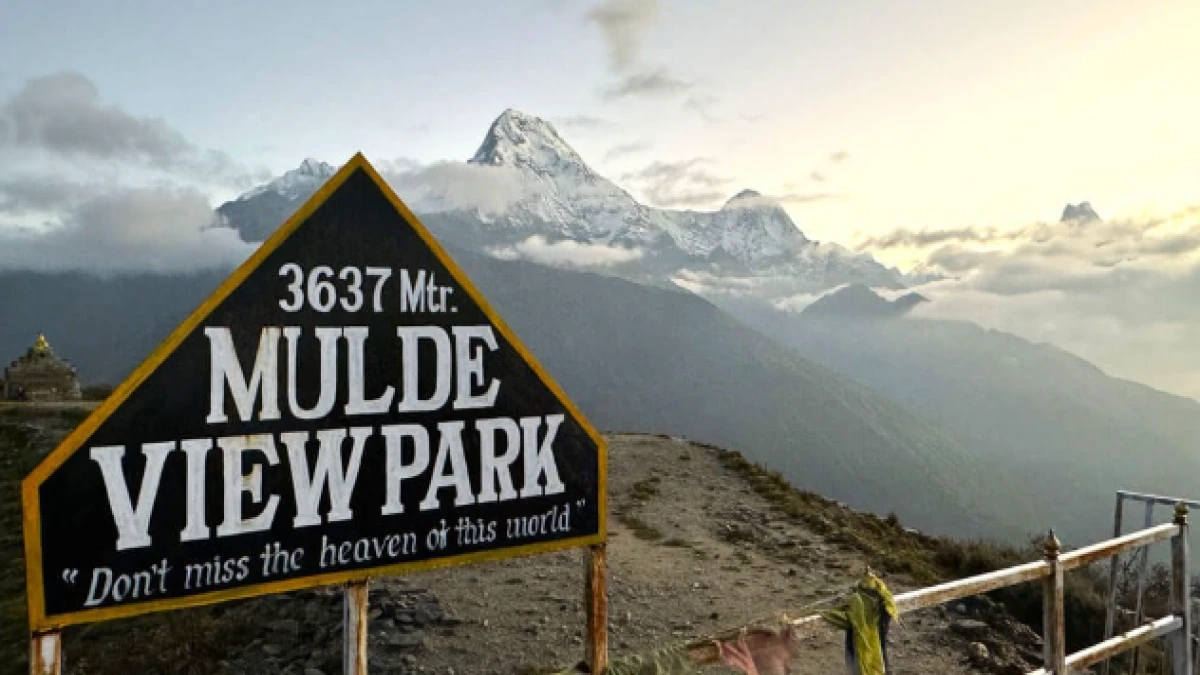Muldai Viewpoint Trek is a relatively undiscovered gem that offers some of the most stunning panoramic views of the Annapurna and Dhaulagiri ranges, all within a short and peaceful 4-day trek. Tucked quietly above Ghorepani and Poon Hill, the Muldai Viewpoint (3,637m) delivers a tranquil Himalayan experience away from the crowds, yet rich in natural beauty and cultural depth.
Unlike the busy trails of more commercial treks, Muldai’s path winds through serene forests, remote Gurung and Magar villages, and blooming rhododendron forests, especially vibrant in spring. The viewpoint itself offers a 360° Himalayan panorama including Annapurna South, Machhapuchhre (Fishtail), Dhaulagiri, Nilgiri, and more, just with fewer people around to share the view. This makes it an ideal choice for trekkers seeking solitude, scenery, and an authentic connection with the Nepali Himalayas.
Who Should Do the Muldai Viewpoint Trek?
This trek is perfect for those who want off-the-beaten-path adventure without committing to long or strenuous expeditions. It’s ideal for:
- Beginner trekkers with good basic fitness
- Nature lovers who want silence and solitude
- Photographers seeking new perspectives
- Couples, families, or solo travelers wanting a 4-day scenic escape
- Anyone who’s done Poon Hill and wants something quieter but equally stunning
Since the trail doesn’t go beyond 3,637m, it’s safe from altitude sickness, making it very accessible to a wide range of travelers.
Is Muldai Viewpoint Suitable for Beginners?
Absolutely. The Muldai Viewpoint Trek is perfect for beginners, families, solo travelers, and photographers looking for a short but rewarding trekking experience. With a maximum elevation of just 3,637 meters, it’s low-risk for altitude sickness and does not require any previous trekking experience.
If you are reasonably fit and able to walk 5–6 hours per day on undulating trails, this trek is for you. It's also ideal for:
- Those with limited time who still want a full Himalayan experience
- Photographers and sunrise chasers
- People seeking peaceful alternatives to crowded routes like Poon Hill
- Couples and honeymooners looking for scenic, romantic escapes
What Makes the Muldai Trek So Special?
The Muldai Trek is about intimacy with nature and the mountains. Unlike other treks where you share viewpoints with dozens of others, here you’ll often find yourself alone with the peaks, soaking in the serenity. The trail is rich with biodiversity, birds, deer, wildflowers, waterfalls, and mountain silence.
It’s also culturally immersive. Along the way, we interact with local villagers, walk through centuries-old forests, and eat food made from ingredients grown just a few meters away.
Why Is the Muldai Viewpoint Trek One of Nepal’s Best Short Treks?
Because it combines seclusion, breathtaking scenery, and manageable trekking days, the Muldai Trek is perfect for those seeking a meaningful experience in a short timeframe. It offers better mountain visibility than even Poon Hill, with far fewer trekkers.
For those craving the magic of the Himalayas without the chaos of the crowd, Muldai is a peaceful answer. In just 4 days, we experience everything: deep forest trails, local culture, and one of Nepal’s most underrated sunrise spots.


 based on 11 reviews
based on 11 reviews
